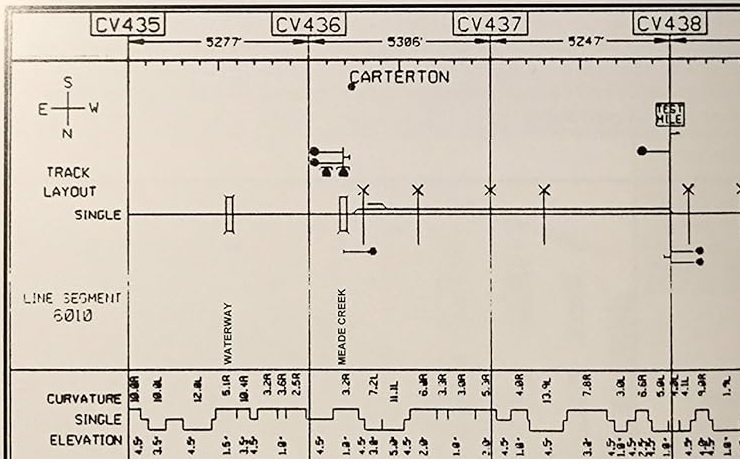On Sheet – Mirror image
On Sheet – Mirror image
 ne thing about railroading, there are always new things to learn.
ne thing about railroading, there are always new things to learn.
For example, I remember reading in a rulebook where a switchman, after aligning a turnout to the main, must stand on the opposite side of the track from the stand. I read that and was puzzled. Why such a rule? Finally someone answered it for me – there was apparently some horrible wreck that occurred somewhere when a brakeman aligned a switch to the main for an oncoming train. At the very last second, he got confused, was certain it was misaligned, and he threw it point-blank in front of the oncoming train’s lead unit. Of course, it swung into the siding, smashing into the waiting train. Couple of dead engineers and a lot of broken equipment.
So yes, in this light, it makes sense.
My current question is this – a friend of mine co-authored the book Norfolk & Western’s Clinch Valley Line. It’s a great book that has tons of pictures and foot-by-foot descriptions of this line, with each couple of miles illustrated by a geological map with the route highlighted, and an official N&W track layout layout, which shows the actual track alignment, all signals, crossing, and bridges. It also includes track speeds, curvatures, and grade profiles. In fact, here’s the upper half of one of the track layouts used.

So cool – everything you need to know, both in the map and the official railroad layout diagram.
But on one section, I looked close to compare the two and couldn’t make sense of it at all. Something was off. None of the stuff on the map jived with the layout. Look above and see if you can spot it.
Did you see it?
Yes, the track diagram is totally flipped. I’m guessing those CV values on top are the mile posts. But this is weird – why would you draw it backwards from how it appears in every other form of human cartography?
Even when you watch TV shows, they mostly show wagon trains heading to the left side of the screen, since left is west, right? Well-organized layouts are easier to understand if west is to your left, east to your right. We can’t always have it that way, but it sure makes things easier.
I can’t understand why the N&W engineering department would do this. The Clinch Valley Line was built from Bluefield to Norton, which is westward. So it’s not in the order it was constructed. I have no idea why they did it this way – I asked my writer friend and he didn’t know why. So maybe someone out there’s got an answer.
You got me.
>>>BOOKS FOR SALE HERE<<<
